Storing
the Heat
August 5, 2009
This week is 'storage week'. I
plan to run the furnace somewhere over an hour at a
time. A burn should produce some 150,000 to 200,000 btu of heat. During
most of our winter days this should be enough for 24 hours of heating.
But that means I will need to store the heat. I decided to use a phase
change medium, hurricane wax. I bought 3000 pounds of the stuff a
couple of years ago. I've got two of the walls built and should be
finishing the roof in the next week. This is one of the walls on the
way. It is one foot thick with two layers of R-19 fiberglass.August 5, 2009
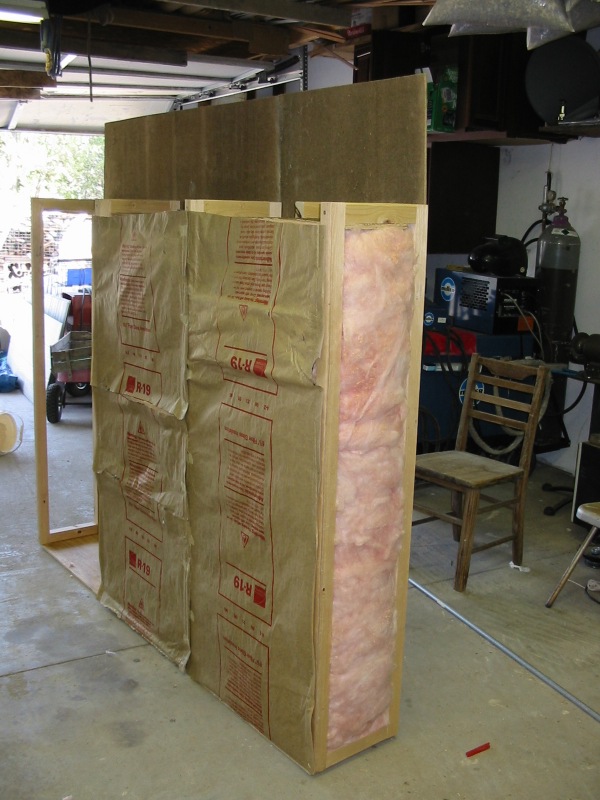
I have started putting the walls in place. My son welded this tank up for me a couple of years ago. Yea, this project is a long time coming. Here it arrives with some of the wax.
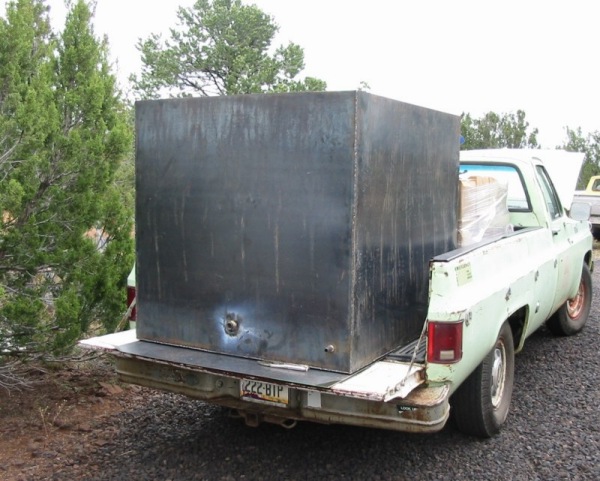
And in place.
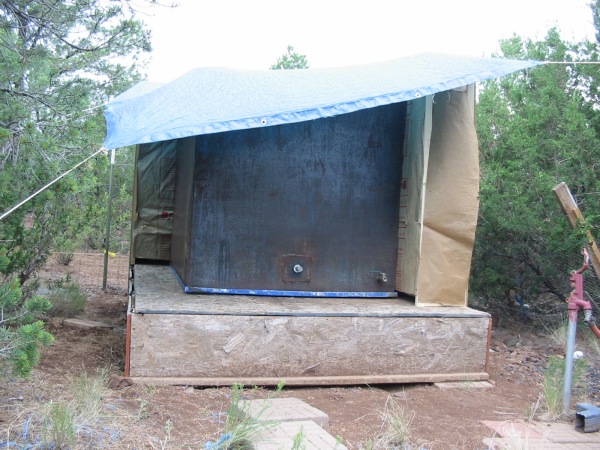
The tank is 4' x 5' and 4 feet tall. there will be a one foot space left at the front for the plumbing. The floor is one foot high and also has two layers of R-19. It is covered while I put it together as this is our rainy season.
______
I've also done a last test of the heat exchanger for flow on the sink side. I want to make sure my back of the envelope numbers worked out in real life.
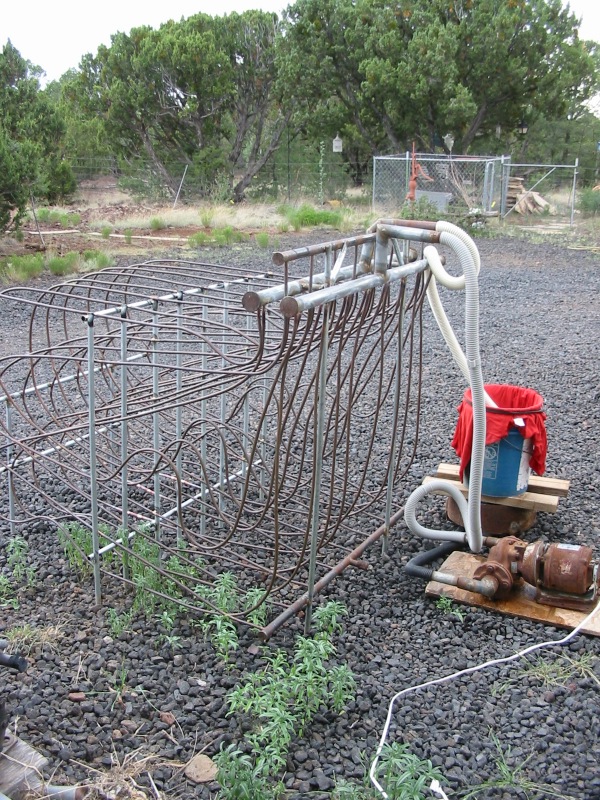
I didn't want any debris getting into the tubing, the red t-shirt over the bucket is the filter. This test is with inch and a quarter corrugated tubing where I'll be running inch and a half pipe to the manifolds under the house. That little pump is very quite and it will be outside. We won't have to listen to that old central heating anymore!
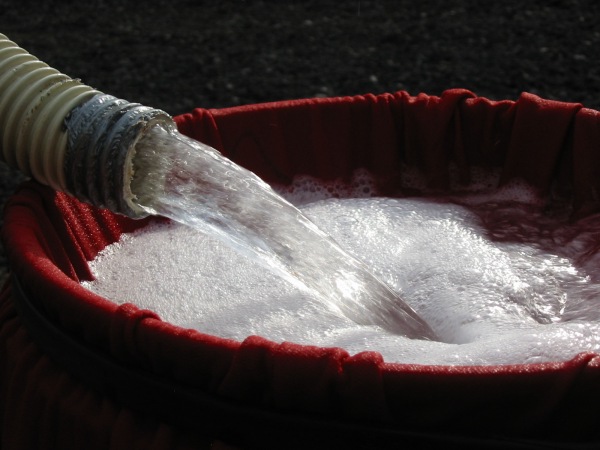
This fills a one gallon container in less than 4 seconds so I can count on 15 gallons a minute. At a 20° F differential that's144,000 btu/hour. Our central heating is 64,000 btu so we should do fine with this. I'm old enough to know 'should' doesn't mean 'will' so I keep checking the numbers and hoping all is well.
Here is the heat exchanger under construction:
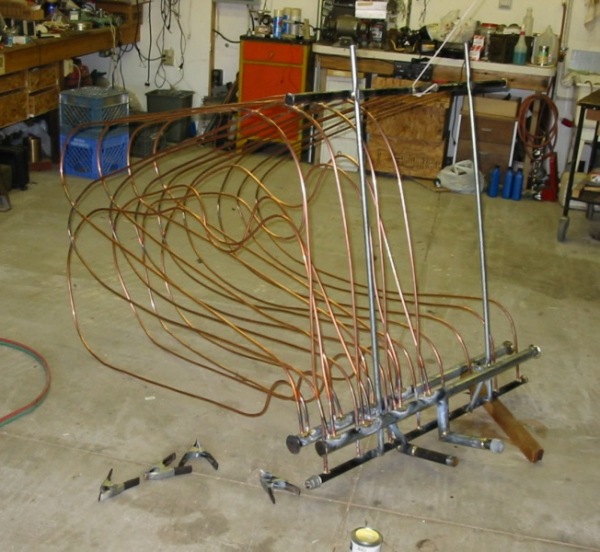
At one time I thought of running finite analysis on the heat exchanger, but I'll end up doing it like I do everything else, the backyard way. It was going to take more time than I was willing to invest to get some software together. I'm sure there is not enough surface to effectively get the heat out of the wax. Wax runs some .25 W/mK so it is more like an insulator. Compare to aluminium which runs 235 W/mK.
Table of Thermal Conductivity
But I have an out. My son has a fabricating business and there is a large box of sheet scraps of Al in his shop. We figured well over a ton and a good deal of it is '90, (.09 inches). So I'll do some more back of the envelope and see how much of it will make me feel comfortable about getting the heat out. The mean distance between the tubing vertically is some 10-12 inches and the banks are spaced at 6 inches. I was never really concerned about getting the heat in, those tubes are much shorter. As the wax melts convection currents will move the heat around.
I have another smaller pump that will be used for the water heater. As long as I put heat into storage we should only need propane for cooking.
The last piece of the puzzle for the sink is the home. I bought a pile of electric baseboard heaters at thrift stores back when I could get them for a buck each. Yea, it was many years ago, that is how long I've been meaning to do this. Here is one of the radiators being pressure tested after brazing new fittings on:
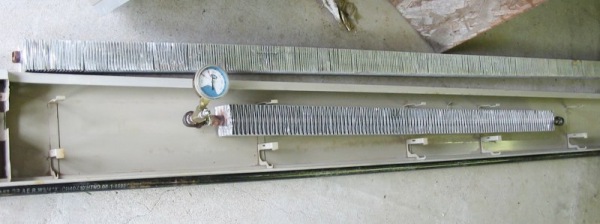
August 12, 2009
I have completed the truss for the roof now:
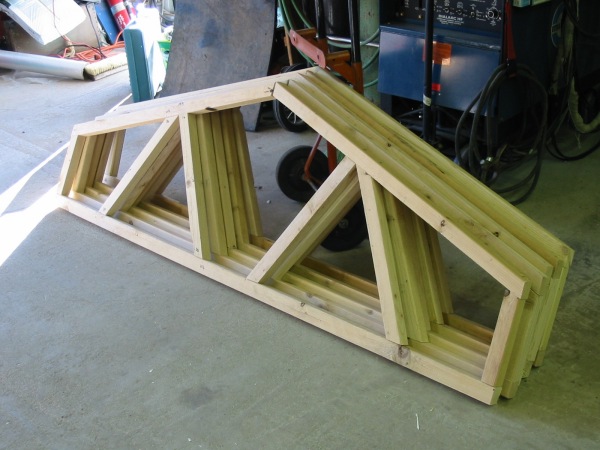
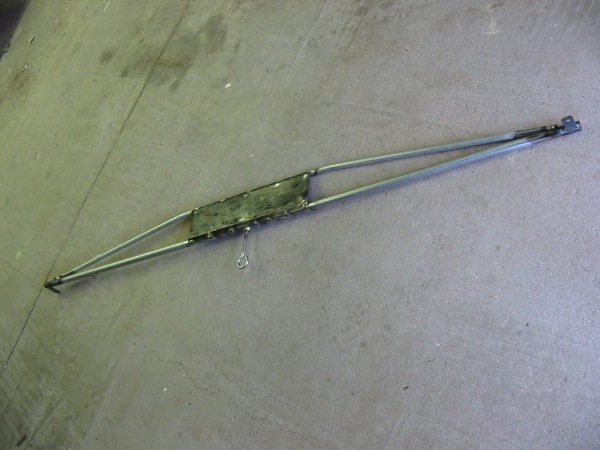
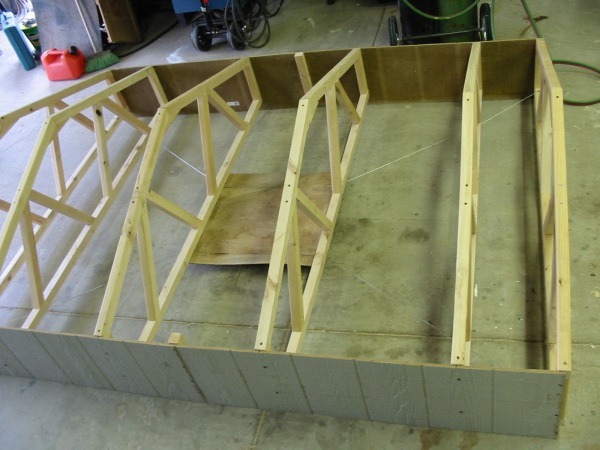
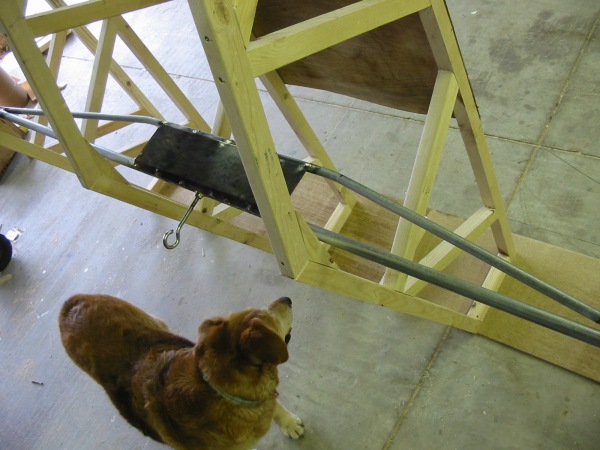
As you can see, Kate, the inspector, approves! I will put handles on the sides so two guys can move it off the building. But it is often just me so I've put support in so I can cherry pick it off. The eye hook unscrews so I can just use a cap to seal the opening rather than goop it up.
Numbers...
My biggest concern was getting the heat out. So I worked out a solution that treats the tank of wax like one wall of insulation. There are eight banks of heat exchanger. Each of these banks will have what is essentially a 4' x 5' plate of ~tenth inch thick aluminium separated at 6 inches. For now, neglecting the resistance of the Al plates, here is the case of the wax near the end of the freeze so that the only source of 165F heat is half way between the plates. I have found different figures for the conductivity of wax, it looks to be around a tenth a btu/ft*hr*F. Yes, it could qualify as an insulator. There is
|
|
3" wax->A<-3" wax
L
|
|
3" wax->A<-3" wax
L
|
for each plate. This is equivalent to 160 feet2 of 1.5" of insulation. This should be 1280 btu/hr per degree of differential. So at the end of the freeze I should be able to get 50,000k-btu/hr at 125F. I'll do the numbers on the AL, but as there is not a great deal of mean distance and it is well over three magnitudes a better conductor, I don't think it will have that great an effect.
I have also done a latent heat of fusion test as I've found this number to be all over the map.
I took 200 grams of liquid wax and raised a half a gallon of water 13F. Specific heat of the wax is .5 and I ended at 81F. So the heat after fusion should be equivalent to dropping 100 grams of 165F water in the half a gallon. ~4.5F rise leaving 8.5F for the fusion. ~35btu. So ~80btu/lb.
Next...
Friday we go down to the valley and I'll be bringing back some ton and a half of aluminium.
August 28, 2009
Well, the day job gets in the way. But I've finished adding the aluminium sheeting to the heat exchanger. Here I've just started, sorting, and tigging triangles of AL. It just seems so retarded...
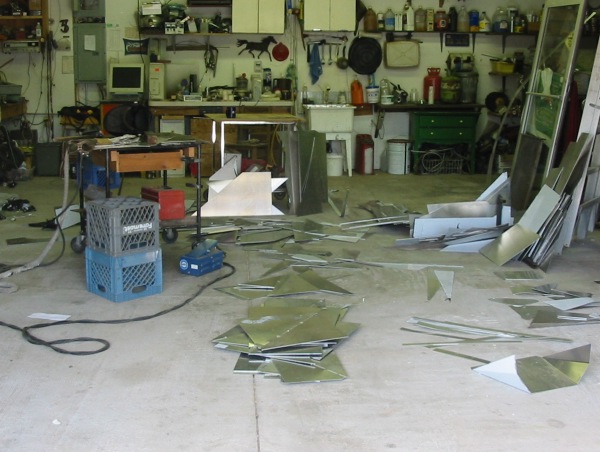
But I've gotten the first half done here, it was still feeling retarded.
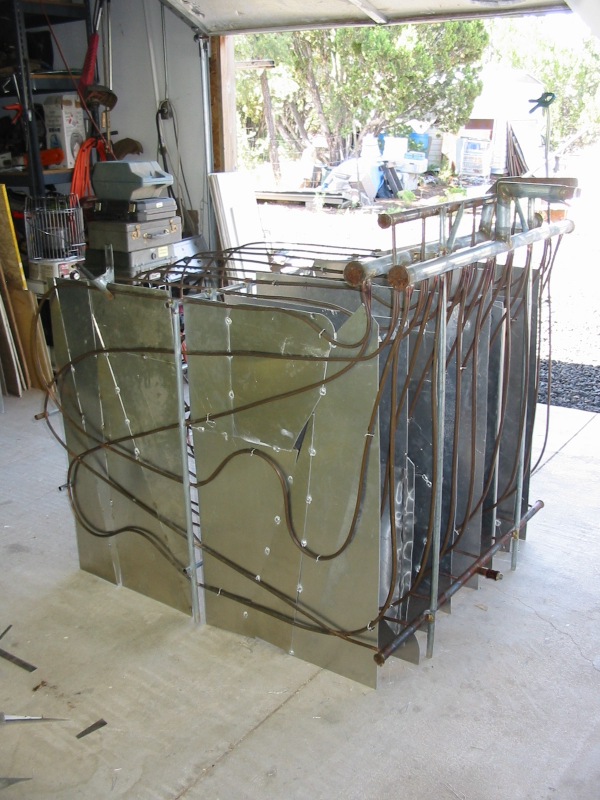
The right sided is wired down and the first left panel is ready to get marks for the drill holes. I think I'll add a panel to the far right set of tubes before I clean the mess in the shop.
***
That's it for now, thanks much for looking. If you have an interest in this stuff there is a group on Yahoo called 'GasifierHeating' you can join.
Best, Dan.
pubdan3 (at) lakeweb (dot) net